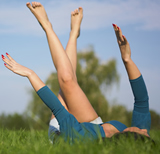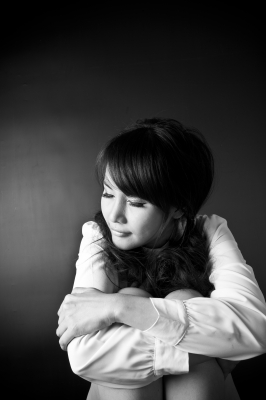Image quality
We're looking for images which you have taken time and effort to get right. Our best contributors plan their images well, execute them to the best of their abilities, and make sure that their post production work maximises the effect of every pixel on the screen.
If this sounds like you, then you're the type of contributor we need!
Each image must be a jpg file between 2200 and 8000 pixels in dimension and each file must be no more than 20mb. Do not enlarge smaller images to meet these criteria, the quality will not be good enough.
There are three key things we look for when reviewing applications:
- Composition - it should be designed to be a stock image, not an image for personal interest.
- Execution - the images should be technically excellent.
- Variety - you should demonstrate the breadth of your talent.
These guidelines will give you some more specific hints and tips on what we're looking for. Reading them will help you to send us images which are most likely to be accepted.
Composition
We're looking for images which are well composed and which are suitable for use as stock images. A 'stock image' can cover many different topics, but a good rule of thumb is that if your image was created for personal interest then it isnt a good stock image. Good stock images are produced for other people's benefit, not your own.

The image above has been taken for personal use and is not appropriate as a stock image. The image below has been professionally staged and executed for the sole purpose of being sold as a stock image.

You should check all your images at 100% size to ensure that every pixel adds value. This can include checking for distractions (including shadows) in the foreground and background, dirt or damage on the subject of the image (unless it's in context), personal information (such as licence plates and aircraft numbers), reflections, nudity and spelling errors.
For example, this image has unnecessary 'clutter' in the foreground:

Image source: gray_um at Flickr
Make sure that the models you use look natural in front of the camera. It may be cheaper to use friends and family to pose for your photos, but the results are rarely as good. Check that your models are well presented, particularly looking out for stray hairs, dirt on clothes, food in their teeth and grubby fingernails.
Ensure that the image is cropped to its best advantage. Here's an example of the same image cropped in four different ways:


The two images above are poorly cropped. The first has very little space around the model, giving the customer less flexibility when they use the image, plus the image lacks the context of the woman exercising in an open space. The second provides much more space around the woman, but the photographer should have cropped out the leaves on the left of the image.


These versions of the image are cropped better. The first provides more space around the model, setting her within a wider scene and giving the customer the option to crop the image tighter if they wish. The second is the best cropped image. It provides plenty of space around the model, without including the stray foliage on the left. It places the model within the context of the park, maximises the customer's opportunity to crop the image themselves and, very importantly, provides a perfect space for customers to add copy/text to the image.
We don't accept images with border or frames, unless it is an intrinsic part of the image's design. We also don't accept calendars, where the intention is that the customer will print the image and use it as a calendar.

The picture on the left would not be acceptable because it has a border which is not an intrinsic part of the design of the image. The picture on the right, however, would be acceptable because the design of the image would be lessened if the border was removed.
Because all our images are sold as jpgs we cannot accept images with sample text or watermarks, as customers may not be able to remove them after purchase.

For example, this image would not be accepted as it contains sample text.
We're happy to accept images which are for editorial use only, for example images which show a news event unfolding, a national or international brand, aspects of a national culture, famous people, and subjects where the design is copyright and therefore cannot be sold for commercial use. Please note that if your application is accepted then any editorial images you upload will need to specify what or who the image is of and, if they are of a real life event, then additional information will be needed (such as the date and location). We cannot accept images of children for editorial use where a child is the main focus of the image, unless you have a model release.
Execution
We expect your example images to be of the highest technical standards. Here are some of the more common technical faults which you should avoid.
Reflections
Artificial reflections often look unnatural and can limit the usefulness of an image to customers. We recommend that you avoid using them.
Isolation
When isolating subjects (cutting out the background) ensure that you do this well. Check the edge of the subject for grey patches, jagged edges, blurring and unnatural lines. Isolating hair is particularly difficult and requires specialist software to get it right. You can see from the magnified section of this isolated image that the hair has not been 'cut out' from the background well enough, which has created a grey area around the hair:

Images should always look sharp when viewed at 100%, unless motion blur has been deliberately allowed in order to show movement or speed. If using a shallow depth of field make sure that it's appropriate to the image and that the focus is centred on a suitable point.
Noise
Noise within photos can cause an overall 'grainy' texture to the image, or discolouration in some pixels. It's often caused by shooting in poor light conditions where the ISO is raised to compensate.
Artefacts
Artefacts around the subject of images is a common fault in both photos and illustrations, often caused when compressing a .tiff or .raw file into jpg format or when resizing images. Always make sure you check the resulting jpg image at 100% to ensure that there are no, or very few, artefacts.
Overprocessing
Avoid overprocessing and post production issues including 'smudging' details due to too much noise removal, oversharpening an image so the edges become too harsh, overuse of filters, or clumsy attempts to remove details from images.
Sensor dust
Sensor dust appears as round blotches in photos, often see in plain blue skies or white backgrounds. These should be removed in post production.
Lighting
The lighting of the image should be appropriate to the context and style of the image. When taking photos be careful to avoid overexposure due to strong sunlight, and don't do a shoot on a gloomy day unless it's appropriate for the subject of the image. The white balance should be well adjusted so that the colours are natural and lens flare should be used sparingly and only when it really adds value to the image.
Colour effects
Images with colour effects such as black and white, sepia or other filters can limit the image's chances of selling - it's easy for customers to add these effects if they want to, but not take them away. Use them only when they are essential to the style or message of the image.


The image above does not work well in black and white. It shows a vibrant, modern scene and therefore the image should have been kept in full colour.
The image to the right is a good example of where the black and white effect can work well, in this case to enhance the feeling of sadness and loneliness in the image.
Defects
Check illustrations carefully for defects. These could include stray horizontal lines (often caused by software errors), dots and jagged edges (including curves which are made up of lots of straight lines instead of a true curve).
Variety
We are happy to accept images showing any subject, however there are some subjects which are very, very common. If you are sending images of any of these then your application is likely to be rejected unless they are exceptionally good:
- Flowers
- Food
- Photos from moving vehicles, including aeroplanes
- Portraits of people doing nothing and showing no emotion
- Charts and graphs
- Common symbols and gesture
- Landscapes and skyscapes
- Waterfalls
- Simple 3D renders and texts
Equally there are subjects which we always need more of. So if your portfolio includes these subjects then we recommend you include them in your example images (if the quality is good enough):
- Groups and teams of mixed gender and ethnicity working together
- Images relating to national/religious holidays and seasonal events (except Christmas and Valentines)
- Non-office based jobs
- Corporate images of modern business life, particularly those which show a different aspect of business life than just people on the phone or using computers
- The latest scientific, technical and web innovations
- Social and community issues
- People doing sports
- Happy couples and families doing things together, including a mix of ages, ethnicities and sexual orientations
- Images relating to the latest international news stories
- Complex and elaborate illustrations
- Images which have well planned and executed areas for copy to be inserted
We never accept the following:
- Images related to the Nazi movement.
- Photographs containing nudity, including female nipples shown through transparent/sheer clothing.





